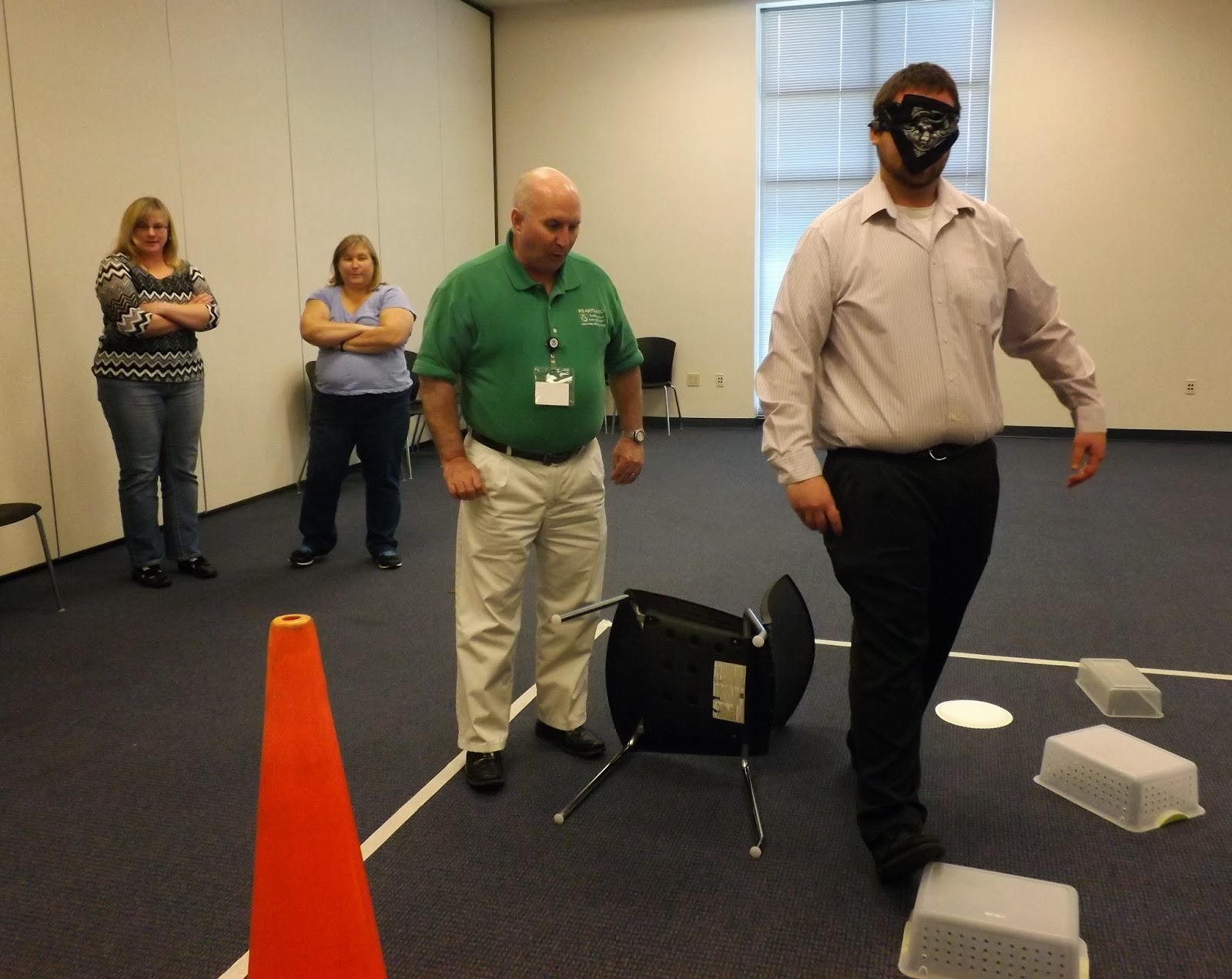In the case of emergency
evacuation and temporary shelter, what is the most efficient and safest
procedure to assist a blind individual and their service dog? Or a paraplegic who uses a wheelchair for
mobilization? The Franklin County
Emergency Management Agency (FCEMA) recently enlisted the expertise of
Heartland Independent Living Center (HILC) to address these concerns.
In a blind simulation exercise, HILC’s Executive
Director
Pat Chambers verbally leads
FCEMA’s Director Abe
Cook
through an obstacle course. Looking on are
Stephanie
Hulsey, FCEMA
Administrator (left,) and Dian
Becker,
Communications Supervisor for the
Pacific Police
Department.
|
Two HILC representatives with
disabilities demonstrated firsthand accounts of what their individual needs
might be in case of evacuation or temporary shelter. Mark Hulsey, HILC Board of Directors
President, is a paraplegic. He
demonstrated how the electronic wheelchair operates, under what circumstances
to use auto vs. manual controls, and how best to transfer
Marcie Wallace, who works as
the Braille transcriptionist for HILC, has been blind since birth. Her service dog, Porter, is always at her
side acting as her eyes. Wallace’s first
concern was for her loyal companion, Porter.
She explained that although in an emergency things might tend to get
hectic, addressing her and Porter in a calm, clear and concise manner would
keep them both focused. She also
explained that when a service dog is in harness, he is the leader. When evacuating, address the dog by his name
followed by “heel” and lead him by the leash so he will follow, but make sure
to retrieve the harness as well.
HILC’s Disability Awareness
Education program was developed to help children understand and respect
individuals with disabilities. Studies
have shown that the more children know about disabilities, the more likely they
are to accept the individual, and the less likely they are to bully them. The
program is presented to elementary school students throughout HILC’s east
central Missouri service area. HILC has
recently expanded the program for adult consumers as well such as emergency or
first responders.

